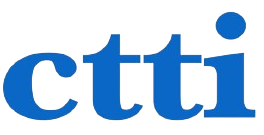Course Overview
The “Certificate in Web Design” is a comprehensive three-month program designed to provide learners with a solid foundation in web design, covering all essential aspects up to the intermediate level. The course includes instruction on modern tools and techniques, focusing on creating visually appealing and user-friendly websites. The course is structured into detailed modules, each focusing on critical aspects of web design.
Through interactive lectures, hands-on exercises, and real-world projects, participants will gain the skills needed to design and develop professional-quality websites.
Course Structure
Duration: 3 months
Sessions per week: 3
Hours per session: 2
Total hours: 72
Module 1: Introduction to Web Design (8 hours)
Session 1: Overview of Web Design
Introduction to web design principles and best practices
Understanding the role of a web designer
Session 2: Web Design Process
The stages of web design: planning, design, development, testing, and maintenance
Creating a project workflow
Session 3: Understanding HTML and CSS
Basics of HTML (HyperText Markup Language)
Basics of CSS (Cascading Style Sheets)
Session 4: Tools and Software for Web Design
Overview of web design tools (Adobe XD, Sketch, Figma)
Setting up a development environment
Module 2: HTML and CSS Fundamentals (16 hours)
Session 5: HTML Basics
HTML elements and attributes
Creating basic HTML documents
Session 6: Advanced HTML
HTML5 elements and semantics
Forms and inputs
Session 7: CSS Basics
CSS syntax and selectors
Applying styles to HTML elements
Session 8: Advanced CSS
CSS3 properties (flexbox, grid, transitions, animations)
Responsive design with media queries
Session 9: CSS Frameworks
Introduction to CSS frameworks (Bootstrap, Tailwind CSS)
Using frameworks to speed up development
Session 10: Hands-On HTML and CSS Project
Building a simple website using HTML and CSS
Applying responsive design techniques
Module 3: JavaScript for Web Designers (18 hours)
Session 11: Introduction to JavaScript
Basics of JavaScript programming
Understanding variables, data types, and operators
Session 12: JavaScript Functions and Events
Defining and using functions
Handling events and user interactions
Session 13: DOM Manipulation
Understanding the Document Object Model (DOM)
Selecting and manipulating HTML elements
Session 14: Advanced JavaScript Concepts
Arrays and objects
Loops and conditional statements
Session 15: JavaScript Libraries and Frameworks
Introduction to jQuery and other JavaScript libraries
Session 16: Hands-On JavaScript Project
Creating interactive web elements with JavaScript
Building a simple web application
Module 4: Web Design Tools and Techniques (16 hours)
Session 17: Introduction to Design Tools
Overview of Adobe XD, Sketch, and Figma
Setting up and navigating design tools
Session 18: Creating Wireframes and Prototypes
Understanding wireframes and prototypes
Creating low-fidelity and high-fidelity wireframes
Session 19: UI/UX Design Principles
User Interface (UI) design principles
User Experience (UX) design fundamentals
Session 20: Colour Theory and Typography
Basics of colour theory and choosing colour palettes
Understanding typography and selecting fonts
Session 21: Designing with Grids and Layouts
Grid systems and layout design
Creating balanced and consistent layouts
Session 22: Accessibility and Usability
Designing for accessibility
Usability testing and best practices
Session 23: Creating Interactive Prototypes
Adding interactions and animations to prototypes
Testing and refining designs
Session 24: Hands-On Design Project
Designing a complete website prototype
Applying UI/UX principles and best practices
Module 5: Web Design Project and Portfolio Development (14 hours)
Session 25: Project Planning and Design
Selecting a project topic
Planning and designing the project
Session 26: Project Development
Implementing the project
Integrating various web design concepts
Session 27: Project Development (continued)
Debugging and testing the project
Preparing for presentation
Session 28: Project Presentation and Review
Presenting the project to peers and instructors
Receiving feedback and making improvements
Session 29: Building a Professional Portfolio
Importance of a portfolio for web designers
Tips for creating an impressive portfolio
Session 30: Career Development and Networking
Job search strategies and networking
Preparing for technical interviews
Conclusion
The “Certificate in Web Design” program provides a comprehensive and in-depth understanding of web design principles, tools, and techniques. Through a blend of theoretical knowledge and practical experience, learners will develop the skills needed to create professional-quality websites. By the end of the course, participants will be well-equipped to tackle real-world web design challenges and significantly advance their careers in the field of web development. Join us at CTTI and embark on a transformative journey to mastering web design, and potentially, your career.


Reviews
There are no reviews yet.